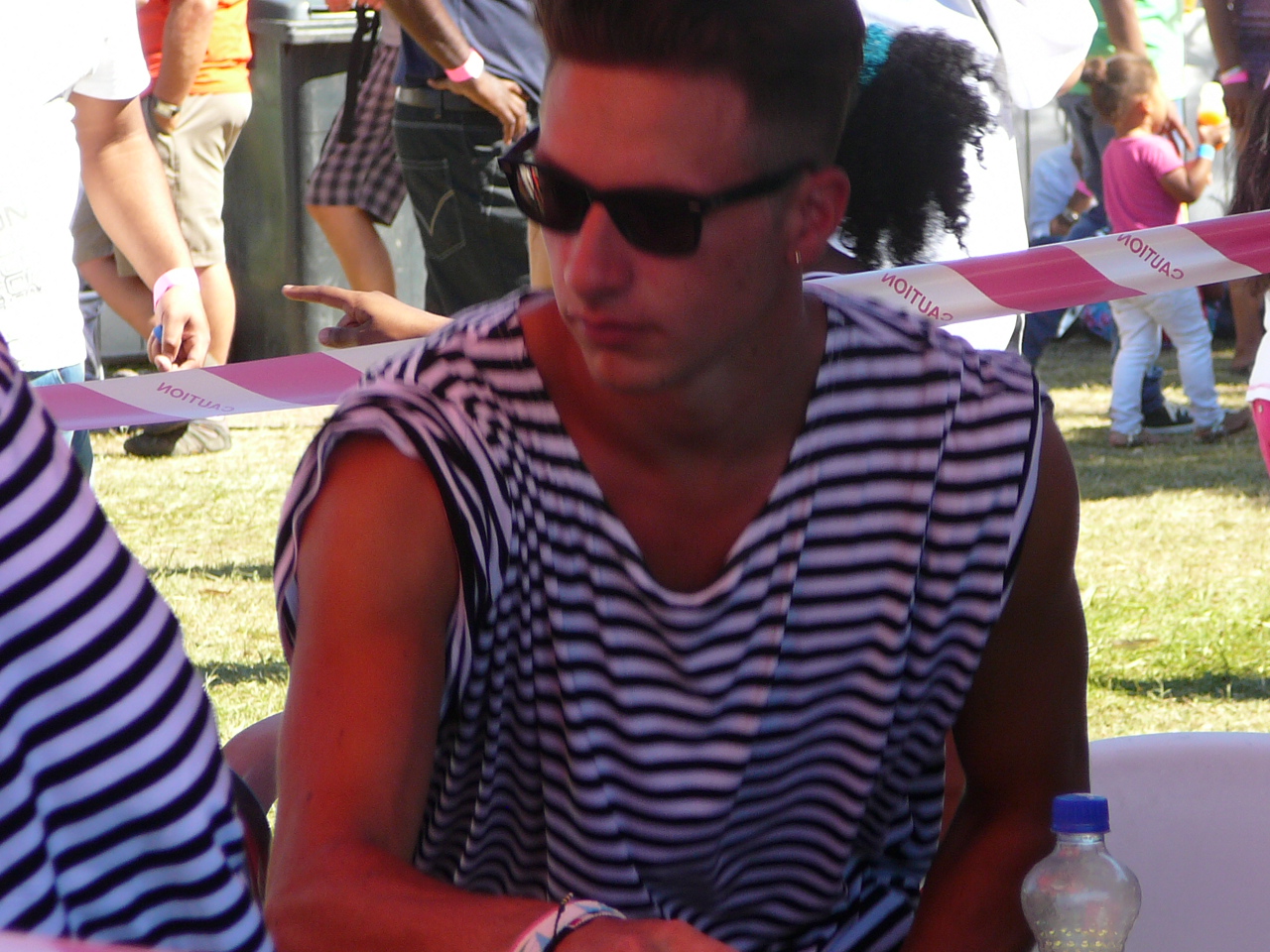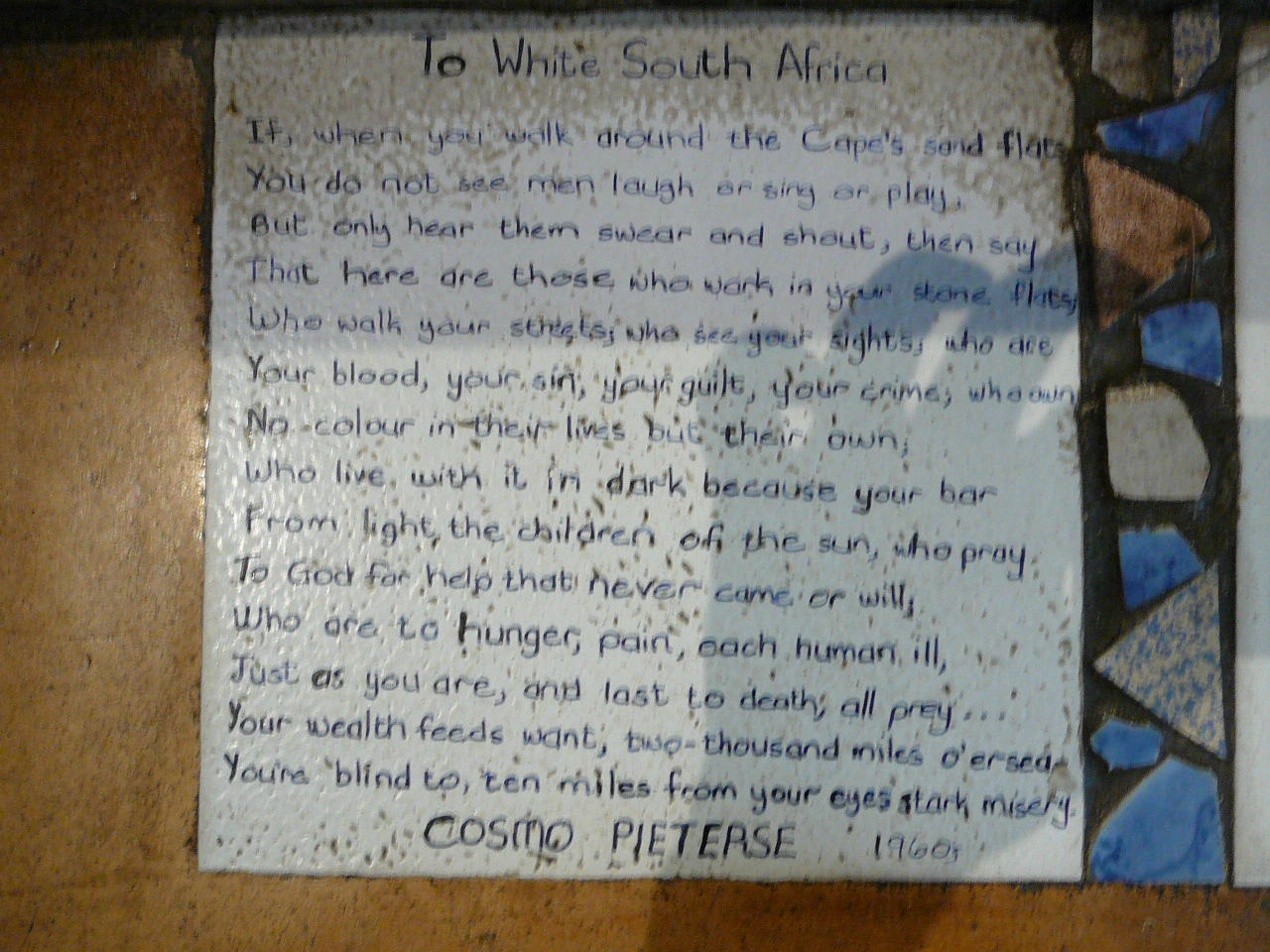This is our final blog entry for South Africa. Our wrists are sore.
During our trip, we met and took photos of several individuals whom we either have not talked about, or feel we should have mentioned more. So this is our last chance.
Deen Singh was the remarkable Project Manager for our construction project. He is a really nice guy, with a warm heart, a penchant for astrology and a spiritual approach to life that can find application in any religion.
Deen gave us some good information on the history of South Africa and the impacts of apartheid. He taught us a lot about the challenges of living in the settlements. He has a great concern for the safety of those around him, and showed incredible patience in teaching all of us how to spackle and perform other construction tasks.
And Deen LOVES these kids...
 |
| “Uncle Deen” with the kids in the library |
Raymond (Ray) Hendricks was our go-to taxi driver. By the end of our stay, we considered him to be a good friend. Ray picked us up in the City Bowl area early in our trip, and we learned that he lived two streets over from our host family in Retreat. So whenever we had a long-distance taxi need, Ray was our man.
Ray recognized John’s voice and said “Hi John” the second time we called him. Talk about connecting with the customer! We took 7 or 8 trips with Ray. He was a cool dude with a lot of substance, and had some interesting cultural insights. Not knowing what to expect from our visit to Mzoli’s in Gugulethu, we asked Ray to drive us over. Sunday is normally his day off, but he stopped by our hotel on the way back from church. That’s why he is dressed up in the photo. A T-shirt, shorts, sandals and shades were Ray’s normal attire. He looked great either way.
 |
| Our favorite taxi driver Ray with his daughter Chandray |
The staff at Derwent House guest house, where we stayed the last 6 nights, was outstanding. This was our best hotel experience ever, by a factor of many. The premises, the service and the food were all uniquely top notch. Dene (rhymes with Renee) always had great suggestions for things to do, and took care of our every need.
 |
| Dene and Joselyn, part of an amazing Derwent House staff |
Below are photos of two ladies we liked at the Devon Valley Hotel in Stellenbosch.
 |
| D.V. front desk lady is psyched to go to the Kaiser Chiefs game |
 |
| This charming woman had a 1000-watt smile |
Here are some other miscellaneous photos of likeable and amusing people:
 |
| Company’s Gardens guy earned a donation with his smile |
 |
| Shwarma showman at Community Chest Carnival |
 |
| Richard from Cameroon (Inverdoorn driver) loved to talk soccer |
 |
| Mzoli’s security guard boogied to the hip-hop beat |
 |
| Waiter at Grand Café & Beach, not Georgia Bulldogs fan |
There are at least two individuals whose photos we wish we had taken, but didn’t. One was Father Anthony, the 65-year old minister at the Jeftha’s church who looked like the Dalai Lama. He was a character. When we met him at the Jeftha’s house, Anthony made off-hand references to coaching some parishioners on their addictions to dagga (marijuana) and other bawdy sins. Not exactly what we were expecting from the pastor.
On our final full day in Cape Town, we were walking down Kloof Street when we came upon a group of 10 construction workers digging up the asphalt. Although their native language was probably Afrikaans, a couple of them were singing a few lines to Queen’s 1975 faux operetta song “Bohemian Rhapsody.”
John jumped in and did an impromptu duet with one of the guys: “I see a little silhouetto of a man, Scaramouche, Scaramouche, will you do the fandango? Thunder bolt and lightning, very very frightening me!” This was complete with demonstrative Italian hand gestures.
And then the grand finale, alternating baritone and falsetto voices: “Galileo! Galileo! Galileo! Galileo! Galileo! Figaro! Magnifico!” The duet partners gave each other a broad smile and a high five, and we then went on our way. Brothers in Mercury. No photo, but we’ll always have the memory…..













































